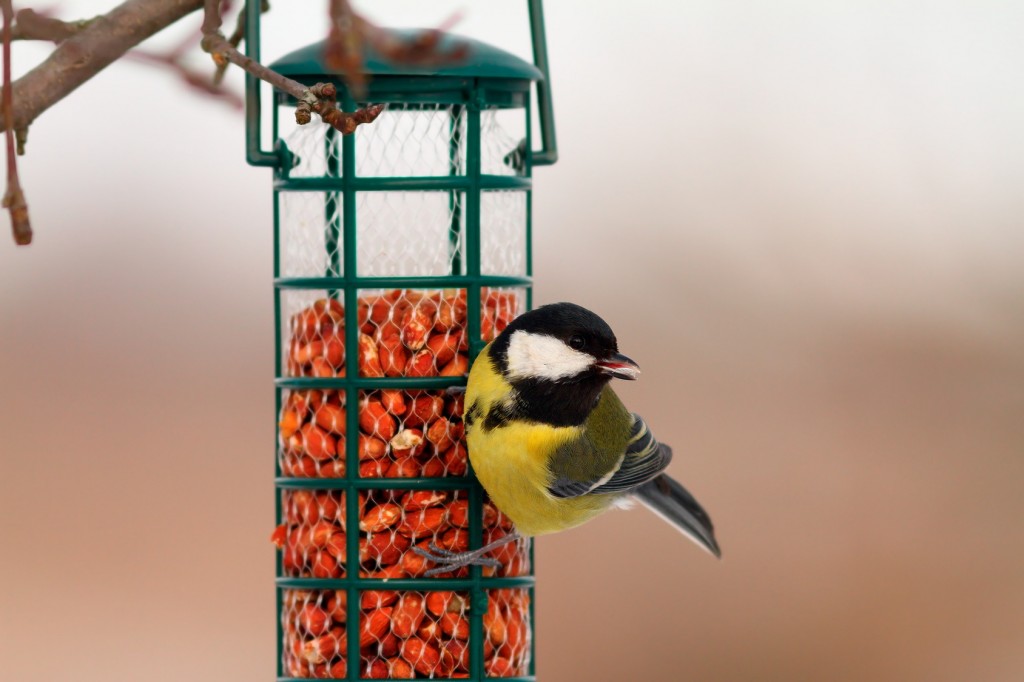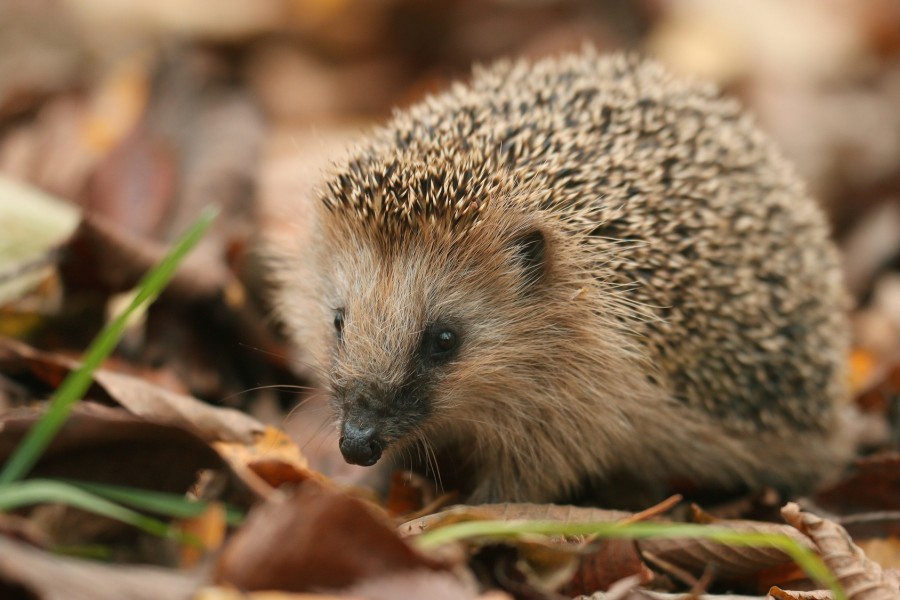A landscaped garden is not just a space for your enjoyment, it is also an important habitat for many species of wildlife where the trees, structures and flowers form an eco-system that provides vital shelter and food. In return for creating a wildlife friendly garden, you also create an organic means of controlling garden pests like slugs or caterpillars, as well as ensuring important jobs like pollination are taken care of by our 6-legged friends.
By looking after your garden’s inhabitants during the cold, lean Winter months, you can make sure that your wildlife population views your garden as somewhere they want to stick around and make their home the following year.
Garden Birds
The winter months are a cold harsh time for many garden birds, when food is scarce and nights are long and cold. Now is the time when they really benefit from regular feeding with food with a high fat content to help them make it through the winter. It’s vital that once you start a feeding regime that you maintain this so that energy reserves are not wasted by birds visiting your garden when no food is available.
1. Put out a variety of food to attract different species of birds
Each species of bird has its own food likes and dislikes, as well as favoured ways of eating. To support as wide a range of birds as possible, put out a variety of food and use recommended feeding methods for each. For example, Starlings will enjoy fat cakes made with peanuts, whereas tits prefer insect cakes and finches like fat cakes with berries. Hang these from tree branches or from special bird feeder stands (that look like a shepherds crook).
Robins, Dunnocks, thrushes and blackbirds are all ground feeders. Thrushes and blackbirds prefer fruit and will welcome over-ripe apples, raisins and song-bird mixes scattered over the ground. Whereas robins and dunnocks will feed happily from food placed in wire mesh held just off the ground.
If you have a garden frequented by cats, placing the food on a bird table would be safer than on the ground where they become easy prey.
(Just a word of caution, if you have a cat or a dog be aware that raisins are harmful to them if consumed. Please do check the ingredients list on the bird food packet or seek the immediate attention of a vet if your pet has consumed food containing raisins.).
2. Choose the correct feeder for your bird food
Mesh feeders are really helpful for feeding birds with seeds and nuts. This is because the spaces in the mesh are the perfect size for birds to get their beaks in, grab some seed, and get out. Plastic nets are the alternative to wire mesh, but are not recommended as some birds can actually get their tongues caught (birds like woodpeckers).
3. Plant bird friendly plants
Many bird friendly plants provide not just important food for feathered garden visitors, but eye-catching Winter displays. Consider planting berrying and fruiting trees and shrubs such as Malus, Cotoneaster and Pyracantha to fill gaps
As well as plants that provide furry seeds such as wild clematis, milk thistle and artichoke. Not only do the birds eat the seeds, but they also use the hair surrounding seeds to insulate nests.
4. Make your own fat balls
Fat balls are important to a balanced diet for your birds. You can make your own by using objects like empty coconuts, or logs as moulds. All you have to do is melt some suet, then pour in a mould that has a hole in it. This is a fun activity to do with children, who have the added enjoyment of then watching the wildlife enjoy the fruits of their labour.
5. Provide clean, fresh and unfrozen water
Not only is water important for drinking but for cleaning plumage over the winter. If you have a cat, or a neighbours cat is a regular visitor to your garden, make sure it’s placed in position where it’s difficult to reach.
6. Clean out or put up nest boxes
Nest boxes aren’t just used for laying eggs and raising young. Over winter small birds huddle together in nest boxes over Winter to keep themselves warm.
Don’t choose novelty nest boxes. Pick a practical box that’s suited to the birds that gather in your garden. Make sure it’s up (or existing nest boxes cleaned) by late Autumn so they’re ready for the colder months.
When putting up your nest box, position is important. Place it somewhere between East and North, so it doesn’t get too hot in the Summer, or too damp and cold in the Winter.
Helping Other Wildlife
When the temperatures start to drop animals such as hedgehogs and frogs are on the look out for a warm place to take shelter or hibernate. Leave a corner of your garden a tad untidy to give them a place to rest and hibernate when temperatures are at their lowest.
It is extremely important that you do not simply set fire to bundles of leaves or bonfires in the winter, as there could be a chance that you have a small creature that has made it their home. Always check first for hedgehogs, frogs and toads before starting a bonfire.
During winter, ponds have a tendency to freeze which can cause problems for fish and frogs who live in them. If you find that your pond has frozen over, it is extremely important not to simply break the ice, or pour boiling water over the ice. This will cause shockwaves through the water which can kill the inhabitants of your pond. The best thing to do is boil water in a pan, and put the pan on top of the ice, this will slowly melt the ice and prevent shockwaves.
One important job to remember is to put down small bowls of water for creatures to drink from. This will attract a range of small animals, as well as birds. During later winter, you can clear out old bird boxes and make space for new nests. This will make it easier for birds to move in during spring, to create their nests and lay their eggs.
Winter is an especially hard time for birds or a small creature who appreciate all they help they can get. By actively protecting your wildlife this winter, you’ll be rewarded with spectacular close up views of nature, as well as your own pest control patrol in the coming year. For more information on how to create a wildlife friendly garden, please call Thames Valley Landscapes on 01628 629720.



